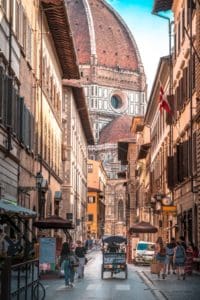The Balearic Islands: Spain’s Enchanting Paradise
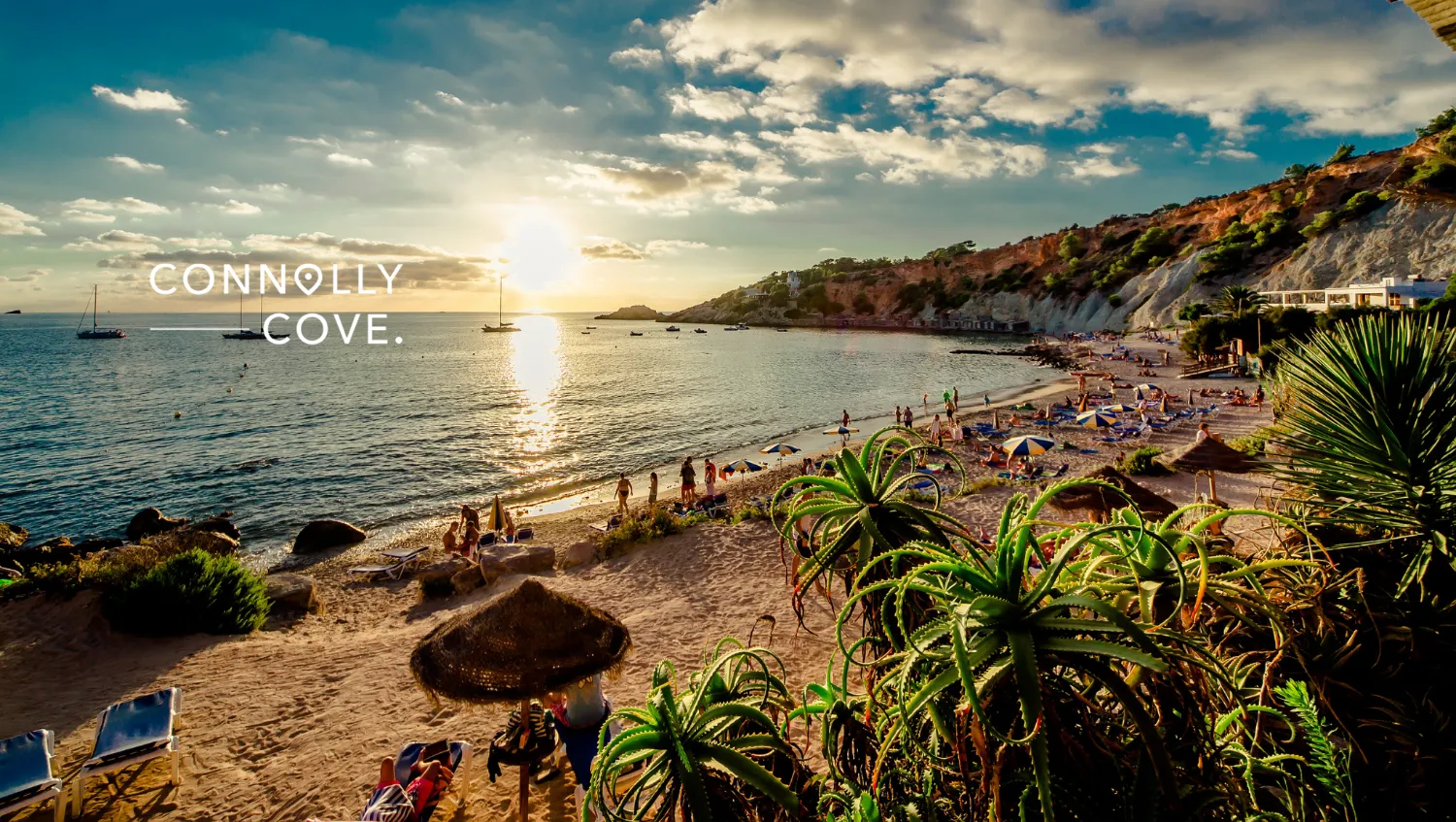
Updated On: November 14, 2023 by Noha Basiouny
Amidst the cerulean waters of the western Mediterranean Sea emerges an archipelago steeped in sun-drenched splendour—the Balearic Islands. With their symphony of golden beaches, whispering olive groves, and ancient hilltop towns, these Spanish gems offer a mosaic of experiences that resonate with the soul of the traveller, seeking both the serene and the vibrant.
From the pulsating nightlife of Ibiza to the tranquil shores of Formentera, the historic charm of Mallorca to the serene landscapes of Menorca, each island is a universe unto itself, bound together by the common threads of sun, sea, and sky. This archipelago, with its rich tapestry of cultures, has long been a haven for artists, adventurers, and those seeking the Mediterranean’s timeless allure.
In this article, we are taking you on a journey to uncover the multifaceted beauty of the Balearic Islands. We will wander through ancient pathways lined with olive trees, explore hidden coves with crystal-clear waters, and revel in the architectural marvels that speak of bygone empires.
The Balearic Islands
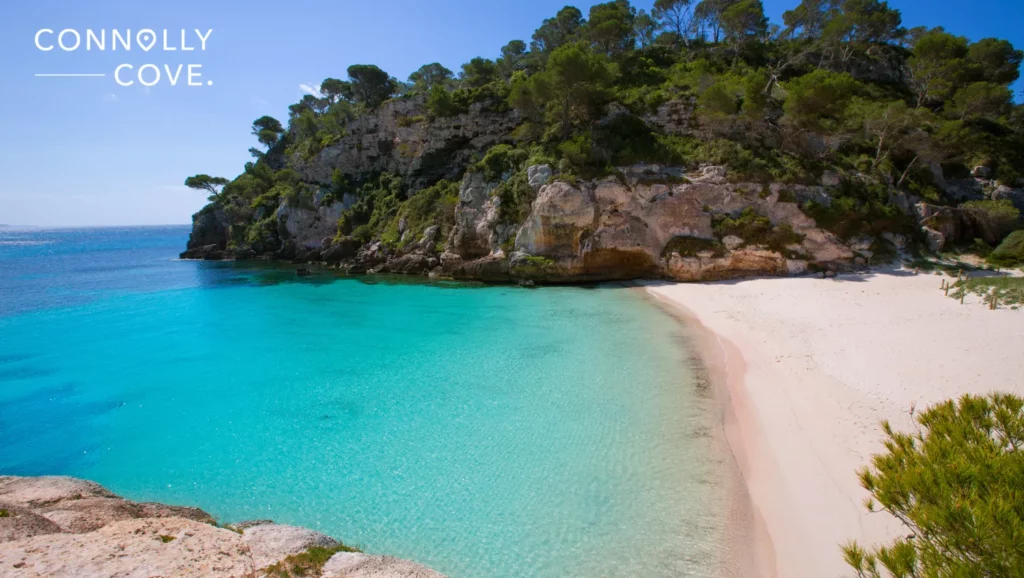
The Balearic Islands are an archipelago situated 80-300 kilometres off the eastern coast of Spain in the Mediterranean Sea. This group of islands is renowned for its vibrant culture, scenic beauty, and a perfect blend of historical significance with modern-day tourism appeal. The main islands comprising the Balearic Islands are Mallorca, Menorca, Ibiza, and Formentera, each offering its unique allure.
The Balearic Islands’ climate makes them a year-round destination, with the warm weather drawing in beachgoers in the summer and the mild winters appealing to those looking to escape colder climates. The Balearic Islands’ typical Mediterranean climate is characterised by:
- Warm, Dry Summers: The summer months from June to September are usually hot and dry with abundant sunshine. Temperatures commonly range from 24°C to 32°C, though they can occasionally reach higher levels during heatwaves.
- Mild, Wet Winters: Winters are generally mild, with more rainfall than in the summer. Temperatures usually range from 8°C to 15°C from December to February. While it is cooler, snowfall is rare, and frost is infrequent.
- Pleasant Spring and Autumn: The shoulder seasons of spring (March to May) and autumn (October to November) are particularly pleasant times to visit. The weather during these periods is mild and usually sunny, with temperatures ranging between 14°C and 22°C, making them ideal for outdoor activities like hiking and cycling.
While the overall climate is consistent across the archipelago, there can be some variation. For example, Menorca, being further north and east, tends to have slightly cooler temperatures and more rainfall than Mallorca and Ibiza, especially in the winter months.
The sea temperature is warm during the summer and early autumn, making it perfect for swimming and water sports. At the peak of summer, the sea can warm up to around 25°C.
Why So Beautiful?
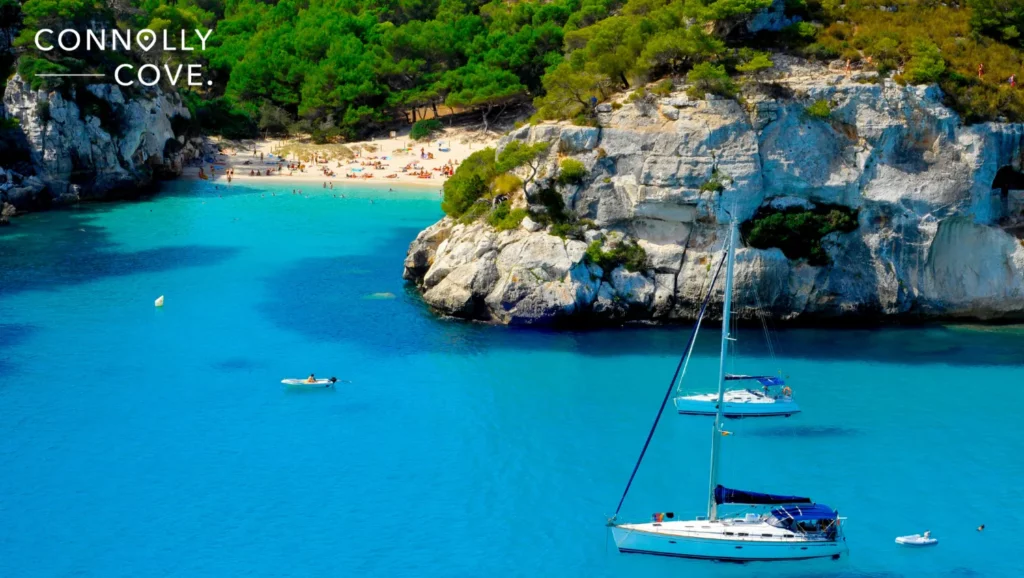
Besides the fantastic weather, the Balearic Islands are unique for several reasons. Take, for example, their stunning paradise-like natural beauty. They boast some of the Mediterranean’s most beautiful landscapes, from rugged mountains and gentle rolling countryside to hidden coves and gorgeous beaches with crystal-clear waters.
The slower pace of life and natural settings make for a perfect relaxation and wellness retreat, with numerous spas and yoga centres. Each island has its own unique charm, offering a wide array of experiences for different types of travellers. They are also a paradise for outdoor enthusiasts, offering hiking, cycling, sailing, windsurfing, and more.
The Balearic Islands also have a rich history with diverse influences from the Phoenicians, Romans, Moors, and Catalans. This is evident in the architecture and archaeological sites—some of those are UNESCO World Heritage sites—as well as cultural events.
In addition, there is a thriving scene of local artisans producing goods like leather, pottery, and jewellery. Speaking of music, Ibiza, in particular, is famed for its world-class nightclubs and electronic music scene.
Another characteristic of the Balearic Islands is their distinct cuisine. The local gastronomy is a highlight, with fresh seafood, Sobrasada (a type of sausage), Ensaimada (a spiral-shaped pastry), and local wines and cheeses, offering a fantastic eating experience for travellers and food enthusiasts.
Now that we got a quick overview of the Balearic Islands, let’s dive more into each one of them a bit separately.
1. The Pulse of the Balearics – Mallorca

Mallorca, also known as Majorca, is the largest of the Balearic Islands, covering an area of about 3,640 square kilometres (1,405 square miles). It is approximately 100 kilometres from north to south and around 70 kilometres from east to west at its widest points. This size makes Mallorca the seventh-largest island in the Mediterranean Sea.
As the largest of the Balearic Islands, Mallorca is accordingly the most populous, with a population that hovers over 945,000 people as of July 2023. However, this number significantly increases during the tourist season when the island welcomes millions of visitors.
This population of Mallorca is quite diverse. While the majority of residents are Spanish, there is a significant presence of other nationalities, including Germans, British, and other Europeans, who have chosen the island as their second home or retirement destination.
The island features dramatic mountain ranges, notably the Serra de Tramuntana, which, by the way, is a UNESCO World Heritage Site. This mountain range runs parallel to the northwest coast and is dotted with picturesque villages like Deià and Valldemossa. The east coast has lovely coves and beaches, while the interior is filled with almond groves, olive trees, and serene plains.
Mallorca also has over 200 beaches, ranging from long sandy stretches like Es Trenc to secluded rocky coves accessible only by foot or boat.
Palma de Mallorca, the capital, is a vibrant city with a historic quarter that includes the impressive Gothic Cathedral (La Seu), the Almudaina Palace, and winding alleys filled with shops and cafés. Palma also offers a dynamic food scene and nightlife. Beyond the capital, there are Roman ruins, Moorish remnants, and stunning examples of modernist architecture featuring old monasteries and castles.
2. Menorca’s Timeless Appeal

Menorca, often spelt Minorca, is the second largest of the Balearic Islands and is known for its more laid-back atmosphere compared to its larger neighbour, Mallorca. Its tranquil villages, relaxed pace of life, and family-friendly atmosphere make it a stunning destination for travellers looking to unwind.
Menorca is approximately 694 square kilometres in area. It is about 48 kilometres long and varies in width from around 5 to 19 kilometres. Despite its smaller size compared to Mallorca, Menorca offers a rich array of landscapes, from its coastline to its interior regions.
Speaking of the population, around 100,000 people live in Menorca, yet, like Mallorca, the island’s population can fluctuate, especially during the tourist season when there is an influx of visitors. The capital city, Mahón (Maó), along with Ciutadella, are the two primary urban centres on the island and host a significant portion of the population.
The capital, Mahón, is known for its deep natural harbour—one of the largest in the world—and Georgian-style houses, a testament to its British colonial past. Ciutadella, the old capital, is a charming city with Gothic architecture, a historic old town, and a picturesque port.
Menorca was declared a UNESCO Biosphere Reserve in 1993 due to its high degree of biodiversity and exceptional natural environments, with diverse flora and fauna, wetlands, and geological features. The island also features a varied landscape with rolling hills, rocky coves, and long sandy beaches.
That is why conservation and sustainability are significant focuses for the island, with efforts in place to protect its pristine environment and promote eco-friendly tourism.
The island’s coastline is interspersed with over 70 beaches, ranging from long stretches of sandy shore to secluded bays accessible only by foot or boat. There is also a remarkable collection of megalithic stone monuments on the island known as taulas, talayots, and navetas, dating back to 1000 BC. These prehistoric sites offer a glimpse into the island’s ancient past.
Menorca has a vibrant tradition of local festivals, especially during the summer, with the most famous being the Festes de Sant Joan in Ciutadella, featuring horse displays and medieval pageantry. It is also known for its artisanal products, particularly leather goods and Menorca’s own style of sandals called “avarques” (abarcas).
3. Ibiza – The Island That Never Sleeps
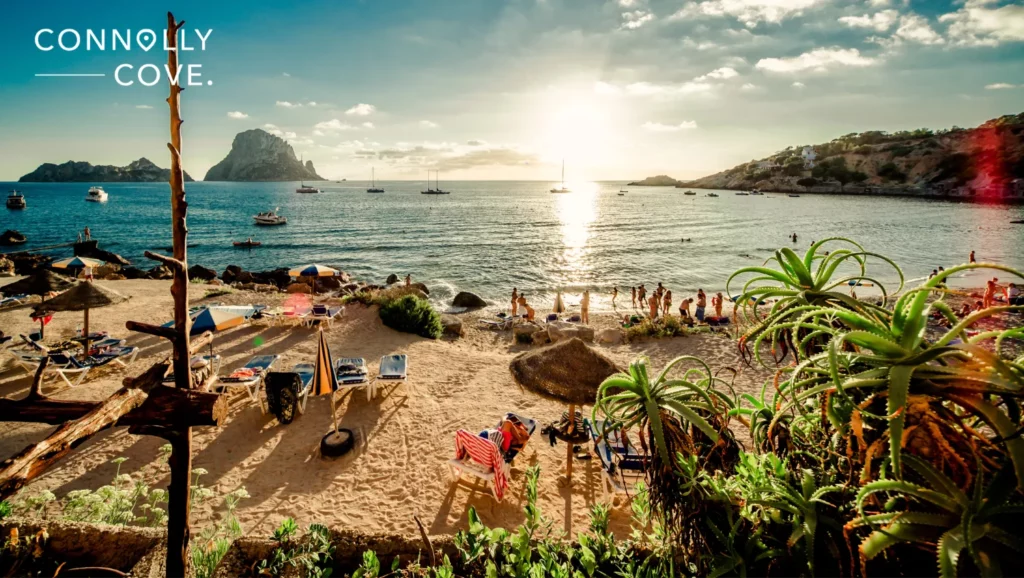
Ibiza is world-renowned for its vibrant nightlife, with numerous clubs and bars that attract DJs and party-goers from all over the globe.
It is the third largest of the Balearic Islands, with an area of around 571 square kilometres. The island is approximately 41 kilometres long and 15 kilometres wide at its widest point. Despite its relatively small size, Ibiza offers a diverse range of experiences, from its world-famous clubs to quiet villages and stunning natural landscapes.
Although smaller than Menorca, Ibiza’s population is bigger, with over 159,000 people living there. The island’s peak tourist season is during the European summer months, from June to September when the population can swell significantly due to the influx of tourists coming for the beaches, nightlife, and festivals.
Yet, the number of tourists coming annually to the island can fluctuate based on various factors, including economic conditions, travel trends, and even global health situations like pandemics. Historically, Ibiza has attracted millions of tourists each year. Before the COVID-19 pandemic, the island saw annual visitor numbers that often exceeded three million.
All those millions of tourists come to Ibiza to enjoy its stunning natural landscapes that feature idyllic beaches, crystal-clear waters, secluded coves, and pine-forested hills. The island’s coastline and inland rural areas offer tranquil retreats and are ideal for outdoor activities like hiking and biking.
Ibizan sites such as the Phoenician settlement of Sa Caleta, the historic necropolis at Puig des Molins, and the well-preserved fortress reflect its rich history. The old town of Dalt Vila in Ibiza Town is a UNESCO World Heritage site.
4. Formentera – The Untouched Gem
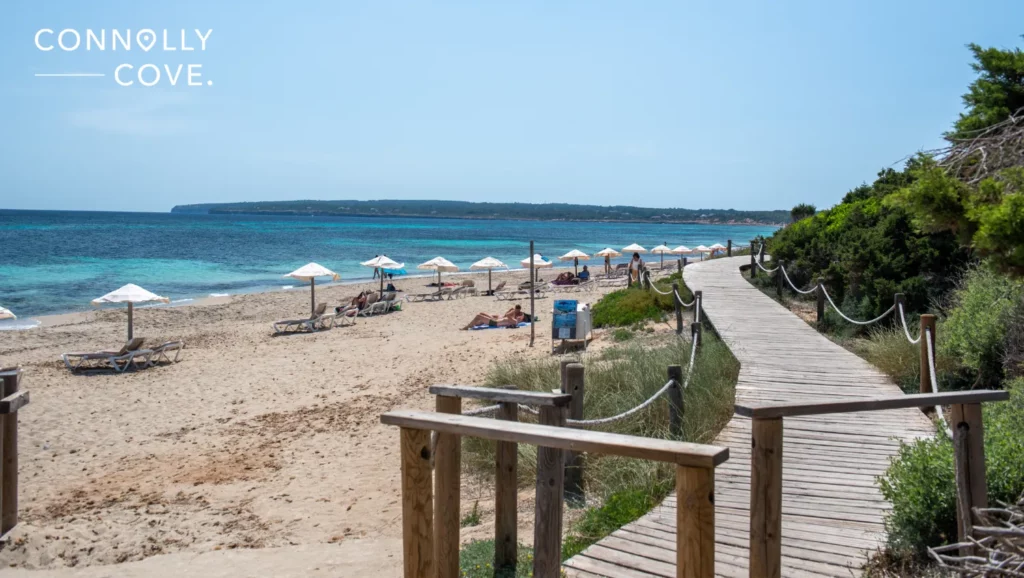
Formentera, often hailed as the last Mediterranean paradise, is the smallest of the Balearic Islands, with a land area of approximately 83.24 square kilometres and a population of only 11,400 people.
The island is known for its beautiful, unspoiled beaches, crystal-clear turquoise waters and white sandy stretched shores backed by dunes and pine trees. This, along with its laid-back atmosphere, makes Formentera a popular destination for tourists looking for a quieter, more relaxed alternative to its bustling neighbour, Ibiza.
As part of the Ses Salines Natural Park, which includes parts of Ibiza and the sea channel between the two islands, Formentera is a UNESCO World Heritage Site, recognised for the preservation of its marine life and seabed, especially the Posidonia oceanica seagrass.
In addition to this, Formentera takes other procedures to protect and maintain the ecosystem. For instance, the island encourages the use of bicycles and electric vehicles to reduce carbon emissions. There are extensive cycling paths throughout. During peak season, measures are taken to limit the number of vehicles coming to the island to prevent overcrowding and reduce environmental impact.
Formentera also promotes the use of renewable energy sources. Solar panels are commonly used for water heating and electricity generation. Public buildings and facilities are often equipped with systems designed to conserve energy. They have also implemented robust recycling programmes and encouraged the reduction of plastic use.
Cultural Excursions and Activities
The Balearic Islands offer a rich tapestry of cultural excursions and activities that cater to a variety of interests, which we are exploring in this very section.
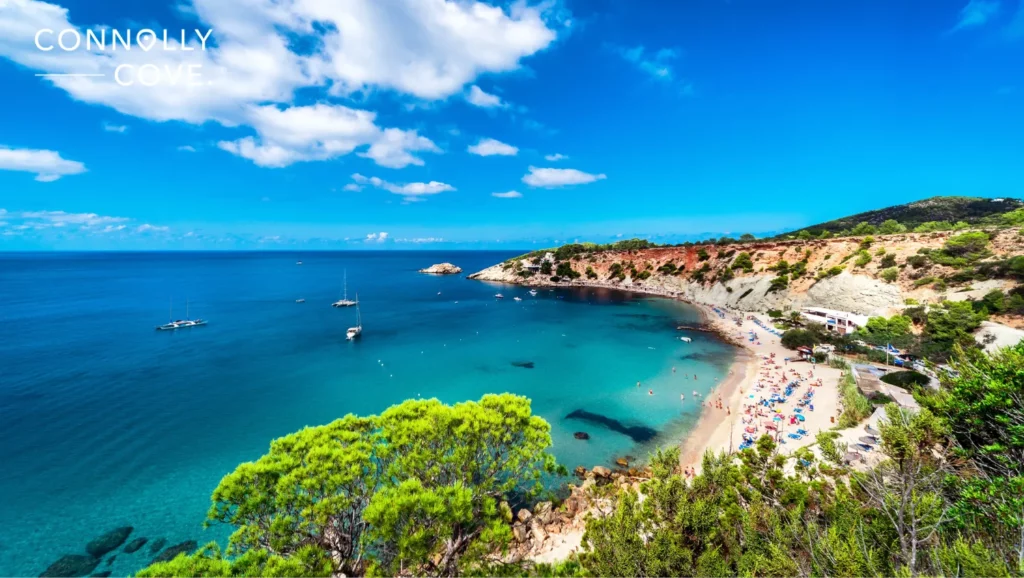
Water Activities
With over 300 beaches in the Balearic Islands, visitors can enjoy sunbathing, swimming, and a variety of other water sports, such as chartering a boat, joining a sailing excursion to explore the coastline, and visiting hidden coves and water parks, like Western Water Park or Aqualand for a family-friendly day out.
The clear Mediterranean waters around Balearic Islands are ideal for scuba diving and snorkelling, with a rich marine life and numerous dive sites. Kayaking, sailing, windsurfing, and paddleboarding are also available to enjoy when on any of the islands.
Sightseeing and Exploration
All Balearic Islands are rich in history and culture. Tourists can, for instance, visit the iconic La Seu Cathedral in Mallorca, wander through the cobbled streets of Menorca’s old town of Ciutadella, dance to the beat in Ibiza’s nightclubs and enjoy the vibrant food and shopping scene in Formentera.
Towns like Sóller, Valldemossa, Deià, and Fornalutx are known for their picturesque settings and historical significance and are great for exploration. Tourists can visit the Caves of Drach and Caves of Artà, which are among the most impressive underground attractions with stunning stalactites and stalagmites. The Serra de Tramuntana mountain range also offers numerous trails for hiking and is a popular destination for cycling enthusiasts.
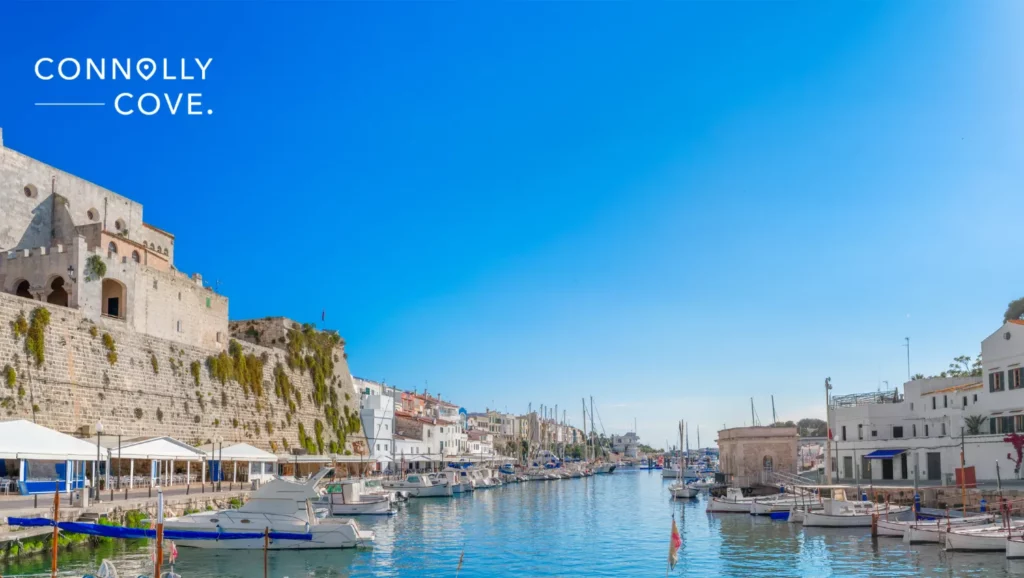
Cultural Activities
Every island celebrates various festivals throughout the year, reflecting their rich traditions and history. Participating in local festivals and events helps visitors experience the islands’ traditions and festivities, adding more value to their trip.
For instance, the Festa de l’Angel and Semana Santa is a religious festival celebrated on Palm Sunday in Mallorca. The Carnival is another significant religious event that takes place across the Balearic Islands just before Lent and is characterised by parades, costumes, and merriment, where the islands come alive with colour and festivity.
Sant Joan Festival is celebrated on the night of 23 June and the day of 24 June. It is especially magical in Ciutadella, Menorca, where it is one of the most iconic and participatory events. Fires are lit on beaches, people gather for dinners, and there are free open-air concerts, creating an enchanting atmosphere on what is considered the shortest night of the year.
In November, the town of Inca in Mallorca hosts an original festival celebrated on three Sundays, featuring local “Ferias”, which are markets and fair-like festivities. This leads up to the Fiesta del Estandarte on 31 December, marking the end of the year with the “festival of the banner”.
Festa de Sant Antoni is a traditional winter fiesta and one of the most time-honoured in the Balearic Islands, taking place on 16 and 17 January. It is celebrated with traditional cuisine, the sound of the zambomba (a rustic percussion instrument), and fire. It can be best experienced in towns like Sa Pobla, Manacor, Artà, Pollença, Muro, and Palma, all of which are in Mallorca.
Sports and Leisure
In addition to the water sports and cultural activities, the Balearic Islands are a hub for outdoor activities. With flat terrain and a network of green routes, the islands are perfect for exploring by bike or on foot, making it an eco-friendly destination.
Tourists can also indulge in relaxation and wellness treatments at any of the Balearic Islands’ many luxury spa resorts, watch breathtaking sunsets, especially when viewed from places like Cap de Barbaria in Formentera or buy some local crafts, such as jewellery and clothing, which reflect the bohemian spirit of the island and make the perfect souvenirs for family and friends.
As the Mediterranean sun dips below the horizon, casting a warm glow over the Spanish archipelago, it is hard not to be moved by the Balearic Islands’ enchanting blend of natural beauty, historic splendour, and cultural vibrancy. Mallorca, Menorca, Ibiza, and Formentera—each with its unique allure—compose a symphony of destinations that together strike a chord with every kind of traveller.
So whether you are yearning for adventure, solitude, or a canvas on which to paint new memories, the Balearic Islands await with open arms. This Mediterranean marvel, with its endless offerings, stands not just as a testament to Spain‘s diverse appeal but as a perennial invitation to explore, discover, and fall in love with travel all over again.



